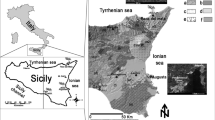Abstract
This paper presents a study in which the specific activity of 14C in hair has been investigated as an easily determined bio-indicator of the integrated 14C exposure (over several months). The study includes 28 Swedish workers handling 14C-labelled compounds, or working in a 14C-enriched environment. Hair samples from personnel at a Swedish nuclear power plant showed very low levels of 14C contamination, if any. In contrast, personnel at the investigated research departments showed 14C levels in hair of up to 60% above the natural specific activity of 14C. Much higher levels, up to 80 times the natural specific activity of 14C, were found in hair from individuals working at a pharmaceutical research laboratory. This contamination was, however, not solely an internal contamination. There were indications that most of the 14C in the hair originated from airborne 14C-compounds, which were adsorbed onto the hair. The difficulties in removing this external 14C contamination prior to analysis are discussed, as are the possibilities of using accelerator mass spectrometry to analyse various types of samples for retrospective dose assessment.




Similar content being viewed by others
References
Broecker WS, Schulert A, Olson EA (1959) Bomb Carbon-14 in human beings. Science 130:331–332
Dawber R (1996) Hair: its structure and response to cosmetic preparations. Clin Dermatol 14:105–112
De Jong AFM, Becker B, Mook WG (1986) High-precision calibration of the radiocarbon time scale, 3930–3230 cal BP. Radiocarbon 28:939–941
Freundlich JC, Rutloh M, Rafter TA (1972) Radiocarbon dating by carbon dioxide method: influence and removal of known impurities. In: Proceedings of the eighth international radiocarbon dating conference, vol 1. Royal Society of New Zealand, Wellington, pp B24–B35
Galeriu D, Melintescu A, Beresford NA, Takeda H, Crout NMJ (2009) The dynamic transfer of 3H and 14C in mammals: a proposed generic model. Radiat Environ Biophys 48:29–45
Geyh MA (2001) Bomb radiocarbon dating of animal tissues and hair. Radiocarbon 43:723–730
Glatzel-Mattheier H (1994) AMS 14C-Messung an Ozeanproben: Untersuchungen zur Optimierung des Aufbereitungsverfahren im Routinebetrieb. Diploma thesis. Institut für Umweltphysik, Universität Heidelberg
Goslar T, Czernik J (2000) Sample preparation in the Gliwice Radiocarbon Laboratory for the AMS 14C dating of sediments. Geochronometria 18:1–8
International Atomic Energy Agency (2004) Management of waste containing 14C and tritium. IAEA Technical Report Series no. 421, Vienna
International Commission on Radiological Protection (1981) Limits for intakes of radionuclides by workers: part 3, ICRP Publication 30. Ann. ICRP 6(2/3):4–9
International Commission on Radiological Protection (1989) Age-dependent doses to members of the public from intakes of radionuclides: part 1, ICRP Publication 56. Ann. ICRP 20(2):21–23
International Commission on Radiological Protection (1994) Dose coefficients for intakes of radionuclides by workers. ICRP Publication 68. Ann. ICRP 24(4):1–84
Levin I, Hammer S, Kromer B, Meinhardt F (2008) Radiocarbon observations in atmospheric CO2: determining fossil fuel CO2 over Europe using Jungfraujoch observations as background. Sci Total Environ 391:211–216
Magnusson Å (2007) 14C produced by nuclear power reactors: generation and characterization of gaseous, liquid and solid waste. Doctoral Dissertation, Lund University
Magnusson Å, Aronsson P-O, Lundgren K, Stenström K (2008) Characterization of 14C in Swedish light-water reactors. Health Phys, Oper Radiat Saf 95(2):S110–S121
Nadeau MJ, Schleicher M, Grootes PM, Erlenkeuser H, Gottdang A, Mous DJW, et al (1997) The Leibniz-Labor AMS facility at the Christian-Albrechts University, Kiel, Germany. Nucl Instr Meth B12:22–30
Pfleiderer C (1987) Beschleunigermassenspektrometrische Kohlenstoff-14 Messungen an Meerwasserproben der Antarktis. Institut für Umweltphysik, Universität Heidelberg
Rasmussen KL, van der Plicht J, Cryer FH, Doudna G, Cross FM, Strugnell J (2001) The effects of possible contamination on the radiocarbon dating of the Dead Sea Scrolls I: castor oil. Radiocarbon 43:127–132
Santos GM, Southon JR, Druffel-Rodriguez KC, Griffin S, Mazon M (2004) Magnesium perchlorate as an alternative water trap in AMS graphite sample preparation: a report on sample preparation at KCCSAMS at the University of California, Irvine. Radiocarbon 46:165–173
Santos GM, Southon JR, Griffin S, Beaupre SR, Druffel ERM (2007) Ultra small-mass AMS 14C sample preparation and analyses at KCCAMS/UCI facility. Nucl Instr Meth B259:293–302
Skog G (2007) The single stage AMS machine at Lund University: status report. Nucl Instr Meth B259:1–6
Stenström K, Leide-Svegborn S, Mattsson S (2008) Low-level occupational 14C contamination–results from a pilot study. Radiat Prot Dosim 130(3):337–342
Taylor DM (2004) Biokinetic models for the behaviour of carbon-14 from labelled compounds in the human body: can a single generic model be justified? Radiat Prot Dosim 108(3):187–202
Taylor RE, Hare PE, Prior CA, Kirner DL, Wan L, Burky RR (1995) Radiocarbon dating of biochemically characterized hair. Radiocarbon 37:319–330
United Nations Scientific Committee on the Effects of atomic radiation (2000) Sources and effects of ionizing radiation. UNSCEAR 2000 report to the General Assembly, with scientific annexes, vol I, New York
Vogel JS, Southon JR, Nelson DE, Brown TA (1984) Performance of catalytically condensed carbon for use in accelerator mass spectrometry. Nucl Instr Meth B5:289–293
Yu J, Yu DW, Checkla DM, Freedberg IM, Bertolino AP (1993) Human hair keratins. J Invest Dermatol 101:56S–59S
Acknowledgments
All the volunteers participating in this study are gratefully acknowledged. This work was financed by research grants from the former Swedish Radiation Protection Authority, now the Swedish Radiation Safety Authority.
Author information
Authors and Affiliations
Corresponding author
Rights and permissions
About this article
Cite this article
Stenström, K., Unkel, I., Nilsson, C.M. et al. The use of hair as an indicator of occupational 14C contamination. Radiat Environ Biophys 49, 97–107 (2010). https://doi.org/10.1007/s00411-009-0245-9
Received:
Accepted:
Published:
Issue Date:
DOI: https://doi.org/10.1007/s00411-009-0245-9




